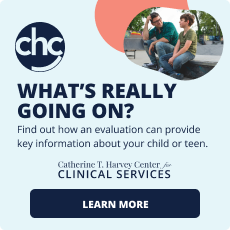
Suicide is a major public health concern. In 2021, suicide was the 11th leading cause of death overall in the United States, claiming the lives of over 48,100 people. Suicide is complicated and tragic, but it is often preventable. Knowing the warning signs for suicide and how to get help can help save lives.
What is suicide?
Suicide is when people harm themselves with the goal of ending their life, and they die as a result.
A suicide attempt is when people harm themselves with the goal of ending their life, but they do not die.
Avoid using terms such as “committing suicide,” “successful suicide,” or “failed suicide” when referring to suicide and suicide attempts, as these terms often carry negative meanings.
What are the warning signs of suicide?
Warning signs that someone may be at immediate risk for attempting suicide include:
- Talking about wanting to die or wanting to kill themselves
- Talking about feeling empty or hopeless or having no reason to live
- Talking about feeling trapped or feeling that there are no solutions
- Feeling unbearable emotional or physical pain
- Talking about being a burden to others
- Withdrawing from family and friends
- Giving away important possessions
- Saying goodbye to friends and family
- Putting affairs in order, such as making a will
- Taking great risks that could lead to death, such as driving extremely fast
- Talking or thinking about death often

Other serious warning signs that someone may be at risk for attempting suicide include:
- Displaying extreme mood swings, suddenly changing from very sad to very calm or happy
- Making a plan or looking for ways to kill themselves, such as searching for lethal methods online, stockpiling pills, or buying a gun
- Talking about feeling great guilt or shame
- Using alcohol or drugs more often
- Acting anxious or agitated
- Changing eating or sleeping habits
- Showing rage or talking about seeking revenge
It is important to note that suicide is not a normal response to stress. Suicidal thoughts or actions are a sign of extreme distress and should not be ignored. If these warning signs apply to you or someone you know, get help as soon as possible, particularly if the behavior is new or has increased recently.
What are the risk factors for suicide?
Suicide does not discriminate. People of all genders, ages, and ethnicities can be at risk. Suicidal behavior is complex, and there is no single cause. The main risk factors for suicide are:
- Depression, other mental disorders, or substance use disorder
- Chronic pain
- A history of suicide attempts
- Family history of a mental disorder or substance use
- Family history of suicide
- Exposure to family violence, including physical or sexual abuse
- Presence of guns or other firearms in the home
- Having recently been released from prison or jail
- Exposure, either directly or indirectly, to others’ suicidal behavior, such as that of family members, peers, or celebrities
It is important to note that suicide is not a normal response to stress. Suicidal thoughts or actions are a sign of extreme distress and should not be ignored.
Most people who have risk factors will not attempt suicide, and it is difficult to tell who will act on suicidal thoughts. Although risk factors for suicide are important to keep in mind, someone who is showing warning signs of suicide may be at higher risk for danger and need immediate attention.
Stressful life events (such as the loss of a loved one, legal troubles, or financial difficulties) and interpersonal stressors (such as shame, harassment, bullying, discrimination, or relationship troubles) may contribute to suicide risk, especially when they occur along with suicide risk factors.
Family and friends are often the first to recognize the warning signs of suicide, and they can take the first step toward helping a loved one find mental health treatment. See the resources on NIMH’s Find Help for Mental Illnesses page if you’re not sure where to start.
Identifying People at Risk for Suicide
- Universal Screening: Research has shown that a three-question screening tool helps emergency room personnel identify adults at risk for suicide. Researchers found that screening all patients – regardless of the reason for their emergency room visit – doubled the number of patients identified as being at risk for suicide. The researchers estimated that suicide-risk screening tools could identify more than three million additional adults at risk for suicide each year.
- Predicting Suicide Risk Using Electronic Health Records: Researchers from NIMH partnered with the VA and others to develop computer programs that could help predict suicide risk among veterans receiving VA health care. Other healthcare systems are beginning to use data from electronic health records to help identify people with suicide risk as well.
Treatments and Therapies
Effective, evidence-based interventions are available to help people who are at risk for suicide.
Brief Interventions
- Safety Planning: Personalized safety planning has been shown to help reduce suicidal thoughts and actions. Patients work with a caregiver to develop a plan that describes ways to limit access to lethal means such as firearms, pills, or poisons. The plan also lists coping strategies and people and resources that can help in a crisis.
- Follow-up phone calls: Research has shown that when at-risk patients receive further screening, a Safety Plan intervention, and a series of supportive phone calls, their risk of suicide goes down.
Psychotherapies
Multiple types of psychosocial interventions have been found to help individuals who have attempted suicide (see below). These types of interventions may prevent someone from making another attempt.
- Cognitive Behavioral Therapy (CBT) can help people learn new ways of dealing with stressful experiences. CBT helps individuals recognize their thought patterns and consider alternative actions when thoughts of suicide arise.
- Dialectical Behavior Therapy (DBT) has been shown to reduce suicidal behavior in adolescents. DBT has also been shown to reduce the rate of suicide in adults with borderline personality disorder, a mental illness characterized by an ongoing pattern of varying moods, self-image, and behavior that often results in impulsive actions and problems in relationships. A therapist trained in DBT can help a person recognize when their feelings or actions are disruptive or unhealthy and teach the person skills that can help them cope more effectively with upsetting situations.
NIMH’s Find Help for Mental Illnesses page can help you locate a mental health provider in your area. Here are tips to help prepare and guide you on how to talk to your health care provider about your mental health and get the most of your visit.
Medication
Some individuals at risk for suicide might benefit from medication. Health care providers and patients can work together to find the best medication or medication combination, as well as the right dose. Because many individuals at risk for suicide often have a mental illness or substance use problems, individuals might benefit from medication along with psychosocial intervention.
Clozapine is an antipsychotic medication used primarily to treat individuals with schizophrenia. To date, it is the only medication with a specific U.S. Food and Drug Administration (FDA) indication for reducing the risk of recurrent suicidal behavior in patients with schizophrenia or schizoaffective disorder.

If you are prescribed a medication, be sure you:
- Talk with your health care provider or a pharmacist to make sure you understand the risks and benefits of the medications you’re taking.
- Do not stop taking a medication without talking to your health care provider first. Suddenly stopping a medication may lead to “rebound” or worsening of symptoms. Other uncomfortable or potentially dangerous withdrawal effects also are possible.
- Report any concerns about side effects to your health care provider right away. You may need a change in the dose or a different medication.
- Report serious side effects to the FDA MedWatch Adverse Event Reporting program online or by phone at 1-800-332-1088. You or your health care provider may send a report.
For the most up-to-date information on medications, side effects, and warnings, visit the FDA website.
Collaborative Care
Collaborative Care is a team-based approach to mental health care. A behavioral health care manager will work with the person, their primary health care provider, and mental health specialists to develop a treatment plan. Collaborative care has been shown to be an effective way to treat depression and reduce suicidal thoughts.

Sometimes when a friend or family member says they’re “fine,” their response can signal that the person you’re talking to needs help or support. Check out our article to learn when you might need to take a closer look.
Five Steps You Can Take to Help
Here are five steps you can take to #BeThe1To help someone in emotional pain:
ASK: “Are you thinking about killing yourself?” It’s not an easy question, but studies show that asking at-risk individuals if they are suicidal does not increase suicides or suicidal thoughts.
KEEP THEM SAFE: Reducing a suicidal person’s access to highly lethal items or places is an important part of suicide prevention. While this is not always easy, asking if the at-risk person has a plan and removing or disabling the lethal means can make a difference.
BE THERE: Listen carefully and learn what the individual is thinking and feeling. Research suggests acknowledging and talking about suicide may reduce rather than increase suicidal thoughts.
HELP THEM CONNECT: Save the 988 Suicide & Crisis Lifeline number (call or text 988) and the Crisis Text Line number (741741) in your phone so they’re there if you need them. You can also help make a connection with a trusted individual like a family member, friend, spiritual advisor, or mental health professional.
STAY CONNECTED: Staying in touch after a crisis or after being discharged from care can make a difference. Studies have shown the number of suicide deaths goes down when someone follows up with the at-risk person.
Source: National Institute of Mental Health | Suicide Prevention, https://www.nimh.nih.gov/health/topics/suicide-prevention | Public domain. Last updated December 2024.
This resource is filed under:





